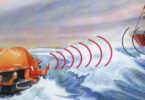GMDSS Stands for Global Maritime Distress and Safety System This System was adopted by IMO in 1988 and replaced the 500 Khz MORSE CODE SYSTEM
Limitation of Morse Code System :-
- Short Range
- Manual Alerting
- Aural Watch keeping.
Points to pounder regarding GMDSS:
The Global Maritime Distress and Safety System or GMDSS is an international system using advanced communications technology. Development of GMDSS was initiated by the International Maritime Organization (IMO) and the system represents a significant improvement in maritime communications.
GMDSS is designed to enhance ship-to-shore communications and provide rapid, automated distress alerting, with positional information if available. While compliance is mandatory for large cargo and passenger ships on international voyages or in the open sea, it is voluntary for recreational vessels. GMDSS will however have an impact on recreational boaters, and it is recommended that recreational boaters become familiar with its features. To help with the transition to GMDSS, Coast Guard stations will continue to monitor VHF channel 16 and MF frequency 2182 kHz for the foreseeable future. The mandatory equipped vessels however, discontinued monitoring MF frequency 2182kHz on February 1st, 1999, and are only obligated to monitor VHF channel 16 until February 1st, 2005. The GMDSS equipment on these vessels will instead be monitoring for digital data on VHF channel 70 and MF frequency 2187.5 kHz.




Man Overboard is a distress situation. Even the RT message will be Distress message . Information given that RT message will be Urgency is absolutely wrong. Students following this in GOC examination will fail. Request you to correct this. You may consult ITU manual for maritime mobile & maritime mobile satellite services.
Thanking you